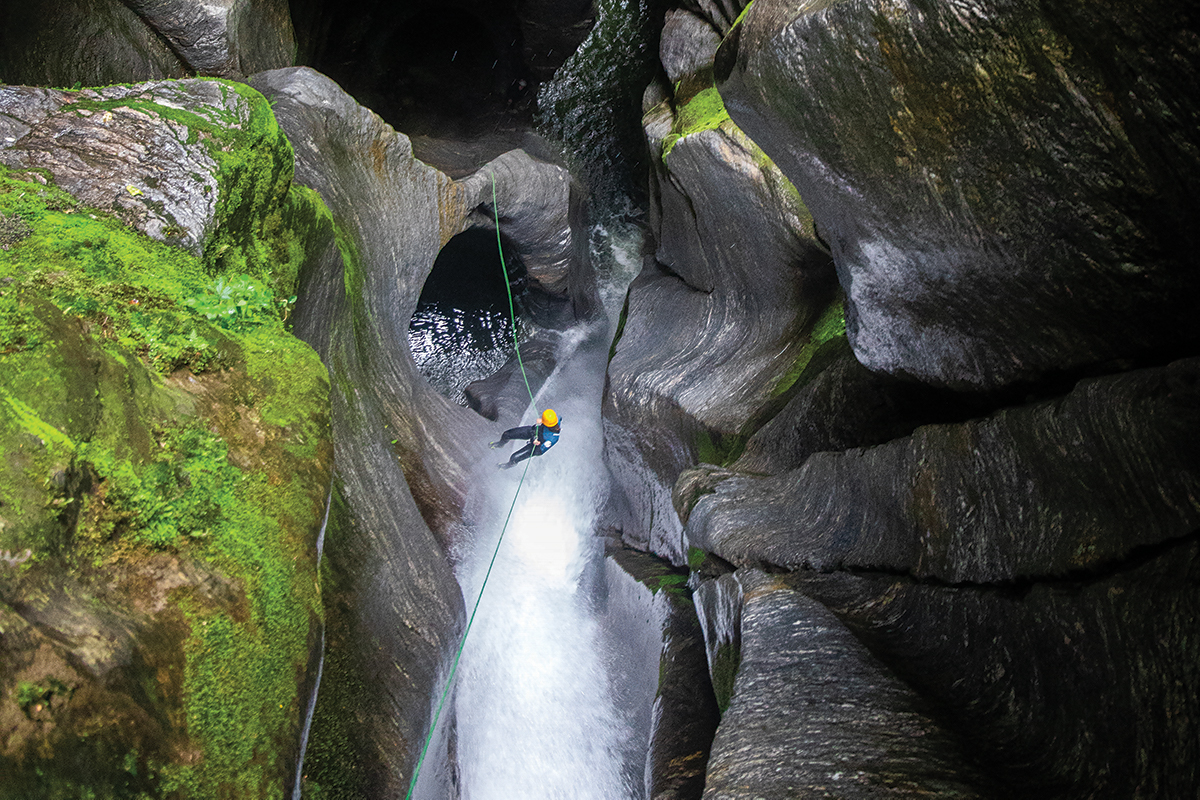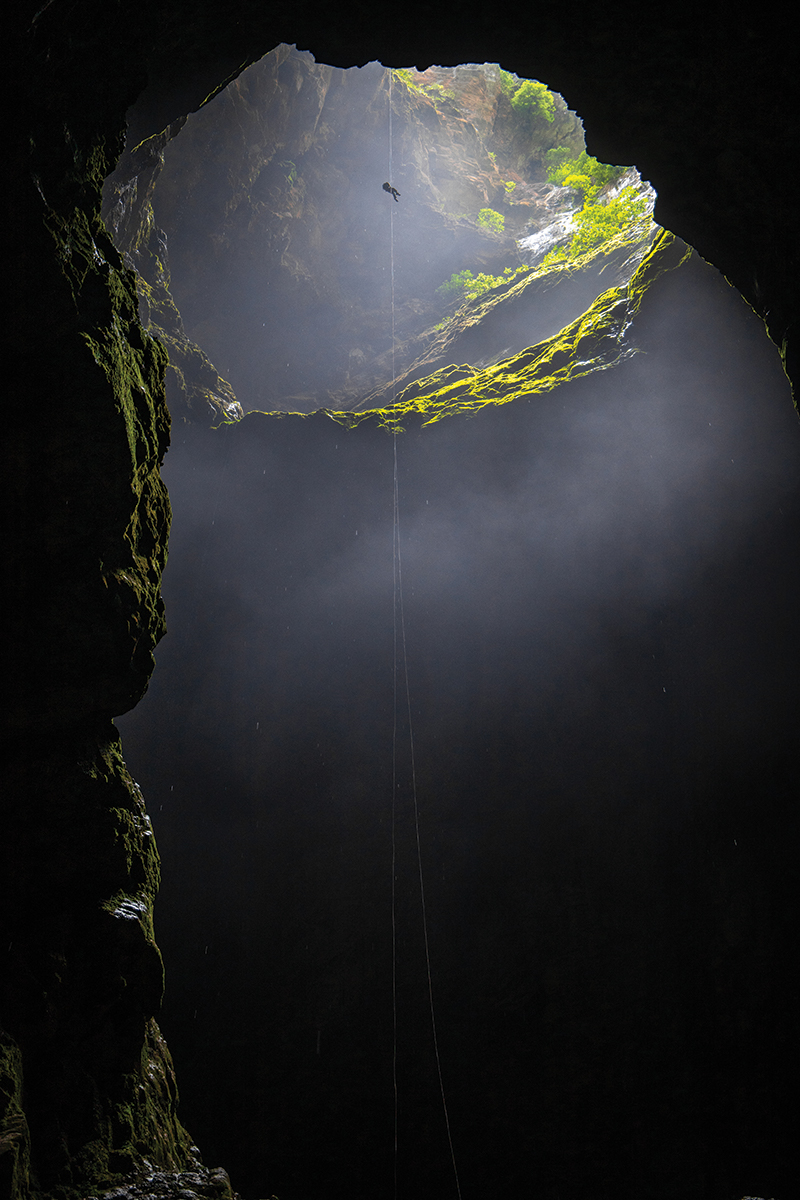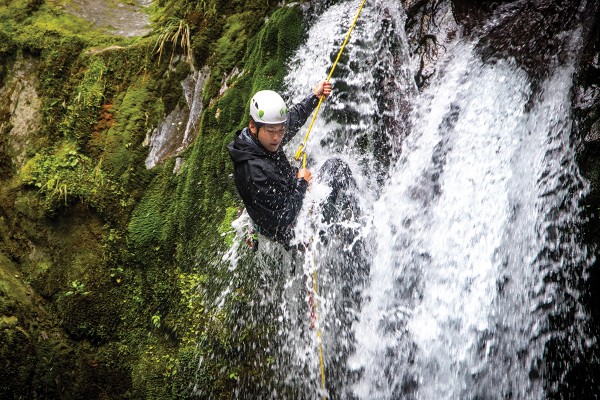Eugene Yeo likes to spend his free time in cold, damp underground spaces. No, not Dunedin basements, but rather the intricate cave systems that lie beneath Aotearoa. He’s also a keen photographer, shining a light on places that sometimes exist in utter blackness.
Eugene, who just graduated here, is one of seven people located in the Otago-Southland Region who are part of the New Zealand Speleological Society, AKA the caving society. The NZSS is a tight knit community of around 300 people, with two additional members since Eugene got his flatmates to join.
Eugene started the caving branch in the Uni’s Tramping Club after convincing the executive to invest in caving equipment and go on annual caving trips. He spends time exploring the different cave passages, underground rivers, and beautiful structures beneath. Eugene described caves as truly “the final frontier of land exploration” since most mountains, climbs, and other outdoor places have been fully discovered.
The largest enclosed space in New Zealand is a cave, at over 1 million cubic metres large. These immense systems attract all sorts of adventurous types, like Eugene. Many people are under the impression that caving is about sucking in your breath to squeeze through ridiculously tight spaces, sometimes while being submerged in water up to your neck – and they are 100% correct. But caves can also take the form of magnificently large and incredibly pristine chambers. Eugene said that caving provides a way for people to see sights they might not otherwise see on a normal hike or tramp. “[I’ve seen] some of the clearest blue pools, amazing waterfalls, and massive chambers that many people have no idea about,” he said.
Eugene was introduced to caving back in Malaysia when he was a kid. Malaysia has many significant cave systems, including the longest in the Southern Hemisphere, spanning 215km. “I didn’t get into technical caving until [I came to] New Zealand, when I happened to meet the right people,'' he said. His main draw to caving is the wild scenery. He described it as a “little time capsule” as everything is “stashed away from the elements, both natural & human, and has been in the making for thousands and thousands of years''.
The Otago region does not have many caves. The South Island’s caves are mostly in Golden Bay and on the West Coast, with a few scattered in Canterbury and Southland, meaning Eugene spends most of his time at the top of the South Island. Eugene described the West Coast as a “limestone graveyard” due to the fact it holds a plethora of “whale, dolphin, Moa and Haast Eagle fossils that are significant for archaeology and palaeontology”.
One of Eugene’s largest caving missions took place over Christmas in Kahurangi National Park. His group spent five hours trekking in gumboots, the preferred footwear for caves, to start a three day adventure. “We carried wetsuits, which is kind of a strange thing to take on a hike up a mountain,” he said. One significant passage within this cave resembled a whale’s chest cavity, complete with massive formations that look like “ribs coming down that you walk through”. The interior slowly turns into a tunnel somewhat like “a subway tunnel that is 20 metres high with a perfectly carved circular chamber”. Further along this 7km cave system there is a certain passage called the Jungle Gym Traverse. “You’re up against a perfectly smooth wall hanging off a horizontally rigged rope and you have to traverse sideways over a pristine green pool towards a waterfall - you can swim if you want, but it's quite deep, cold and difficult to climb back out,” said Eugene. Since the group didn’t bring their wetsuits in that day, they opted for the rope on the side of the chamber.
 Caving is not a safe sport in the slightest. The average time for search and rescue increases by a day for every hour you spend going deeper into a cave. While Eugene has been lucky and prepared enough to avoid a big cave rescue, accidents happen, and other people do get stuck and trapped within caves. He told a story of sitting by a blue pool with a waterfall over 50 metres tall, which he couldn’t see the top of as “light just dissipates into the darkness”. While his group was sitting on this unlikely beach 350m underground, there was suddenly a series of rumbles. At first, Eugene’s group shrugged it off as sounds of rocks falling in the distance, but as the rumbling noises became more consistent, they began to suspect an earthquake. “It was the most afraid I’ve ever felt in a cave, but it’s fun to be afraid sometimes,” he said.
Caving is not a safe sport in the slightest. The average time for search and rescue increases by a day for every hour you spend going deeper into a cave. While Eugene has been lucky and prepared enough to avoid a big cave rescue, accidents happen, and other people do get stuck and trapped within caves. He told a story of sitting by a blue pool with a waterfall over 50 metres tall, which he couldn’t see the top of as “light just dissipates into the darkness”. While his group was sitting on this unlikely beach 350m underground, there was suddenly a series of rumbles. At first, Eugene’s group shrugged it off as sounds of rocks falling in the distance, but as the rumbling noises became more consistent, they began to suspect an earthquake. “It was the most afraid I’ve ever felt in a cave, but it’s fun to be afraid sometimes,” he said.
Their group promptly retreated back up to the surface. Locals later confirmed that there was indeed an earthquake, and that the houses on the land above the cave Eugene was in were shaking. Just like any sport, you can prepare for the elements, but many things can be out of your control. However with tramping, you can be rescued via helicopter with a personal locator beacon [PLB], but these don’t work in underground environments. Rather, you should always take precautions such as always telling someone on the surface exactly what your plans are and when you’re expected to return, always packing emergency supplies, and leaving a PLB at the entrance. Worst case scenario, a small but highly trained Cave Search and Rescue team will come to get you out, sometimes using small explosives to make passages bigger if need be.
All cavers are incredibly protective of caves and cave entrances, partly for safety reasons but also partly because of over-tourism. Eugene referenced caves in Southland that people have graffitied or parts of the cave on the Kepler track that have basically been destroyed by people wanting to take home a piece of the formations as a souvenir. “It’s a very fine balance,” he said. “We want to share these experiences and share these places, but also protect them because they are extremely fragile and very changeable”.
Eugene, for this reason, introduced caving into the Uni’s Tramping Club and became the first official ‘Caving Officer’ of the club. He aimed to introduce people to technical caving, but also make sure they understand the responsibility they have going into these environments. The club has run two 10-day caving trips up to Golden Bay, organised by Eugene and a dedicated group of student leaders. Ethan, one of the students on the trip described the experience as an amazing opportunity. “I probably would have never gone caving to that extent if it wasn’t for OUTC. Honestly, it amazes me that we can just go on a trip like that.” Eugene said that it was “a really cool privilege to experience these places and be able to share them with people who are willing to treat them well.”
When Eugene is not caving, he lives his above-ground life rock climbing, canyoning, working at Uni, and dabbling in photography. All the photos you see here are taken by him. He described his lifestyle humbly, saying that the things he has done “may sound extraordinary to an outsider, but [my achievements] are nothing compared to the top dogs in these communities who are actively going out there and searching for new canyons and pushing new caves”. While some explore caves with a desire to set foot where none have ever gone before, Eugene has a more obscure goal: roasting marshmallows over lava. Critic wishes him all the best in this endeavour, which he ominously admits may require something more extreme than a cave.
 Check out @eugeneyeooo on IG for more adventures.
Check out @eugeneyeooo on IG for more adventures.



